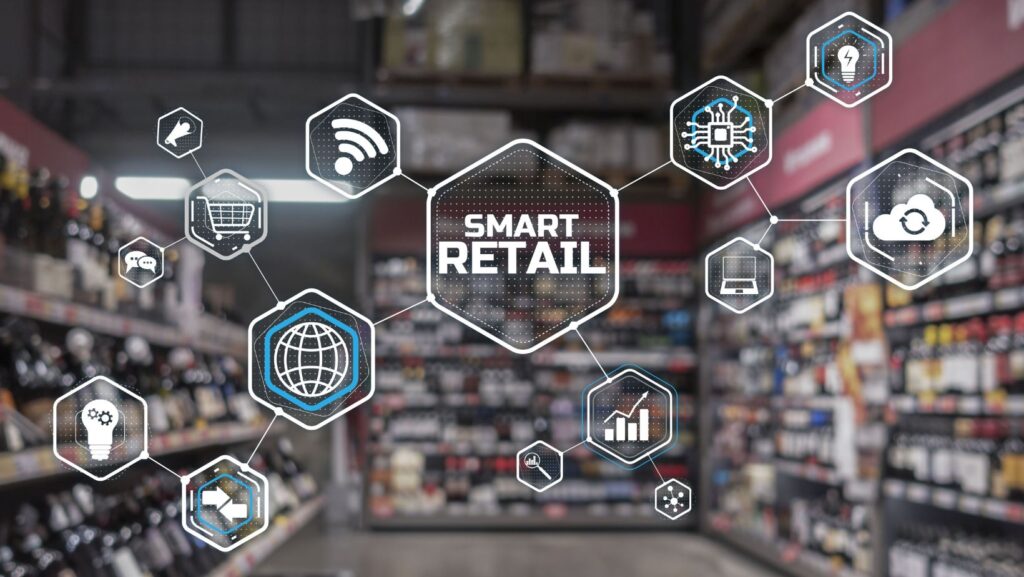The retail landscape is transforming at an unprecedented pace, with technology at the helm. It’s no longer just about selling products; it’s about creating seamless, personalized shopping experiences. From AI to blockchain, emerging tech trends are redefining how retailers operate and interact with their customers.
Stay with us as we unravel the impact of these technological advancements on the retail industry.
Technology Trends In Retail
The shift from physical to digital realms in the retail industry exemplifies adaptation to technology trends. The growth of e-commerce platforms exemplify this shift. It presents a broader range of products and services to customers in ways physical stores couldn’t, taking customer experiences to new heights.

Artificial Intelligence (AI) plays a crucial role in retail transformation, especially in improving customer interactions. For instance, AI-powered virtual assistants provide 24/7 customer service, addressing inquiries and providing solutions promptly. Similarly, AI technology in inventory management can predict trends, facilitating appropriate stocking and preventing overstocks or understocks.
Machine learning, a subset of AI, offers even more extensive capabilities. Retailers use it to analyze previous purchase patterns, thus delivering personalized product suggestions that align with individual customer preferences.
The Role of Big Data in Retail
Pinning down the role of big data in the retail sector enlightens why it’s a significant technology trend in retail. Retailers are leveraging the mammoth amounts of data pouring in from various channels including e-commerce websites, social media, and physical stores, transforming the way they engage customers and streamline operations.
Data-driven Strategy: A New Norm for Retail
With increasing competition, rapidly evolving customer behaviors, and the proliferation of digital channels, retailers find it crucial to make data-driven decisions. Harnessing big data helps retailers understand buying patterns, tastes, and preferences, creating personalized shopping experiences and targeted promotional strategies.

For instance, a jewelry retailer may analyze data from past purchases, browsing history, social media activity, and market trends to send personalized offers and product recommendations to their customers. On the operational side, big data helps in optimizing inventory management, forecasting demand accurately, and improving supply chain efficiency. Amazon, a industry leader, routinely utilizes data-driven strategies for inventory management, ensuring they have the right products at the right time.
In essence, a data-driven strategy, fueled by big data, is fast becoming the new norm for retailers aiming for business growth, enhanced customer satisfaction, and improved operational efficiency.
Big Data and Customer Experience: Tailoring the Shopping Journey
Customer experience stands as one of the crucial factors defining success in retail. Big data plays a pivotal role in enhancing this experience, customizing each customer’s shopping journey based on their preferences and behaviors.

Through big data analytics, retailers can identify the most popular products, track consumer behavior, and analyze patterns. This information allows them to tailor product offerings, website layout, and marketing messages to each customer’s liking, thereby enhancing the buying experience.
Big data, as part of the technology trends in retail, isn’t simply about collecting vast amounts of data; it’s about using this data to understand consumers better and deliver a shopping experience that meets and exceeds their expectations.
E-commerce and Mobile Shopping: A Technological Revolution
Online marketplaces showcase sizable growth, becoming the most preferred way for consumers to shop due to their convenience, variety, and aggressive pricing strategies. Data from Statista reports that global e-commerce sales amounted to $3.53 trillion in 2019 and projects figure to rise to $6.54 trillion by 2022. Amazon, serving as an exemplar, boasts over 100 million Prime members globally, further securing its position as one of the most potent online marketplaces.
Mobile payments are becoming a fundamental part of the retail journey, offering speed and convenience that consumer demand. Juniper Research found that over 2 billion consumers worldwide used a mobile wallet for their payment and money transfer needs in 2020. Giants such as Apple Pay and Google Pay are leading this revolution, making mobile wallet payments more accessible and ubiquitous for consumers around the globe.
The retail industry is undoubtedly on a journey of technological evolution, setting new standards and expectations. The adoption and effective integration of technology is no longer an option but a necessity for retailers to stay ahead in the game.


